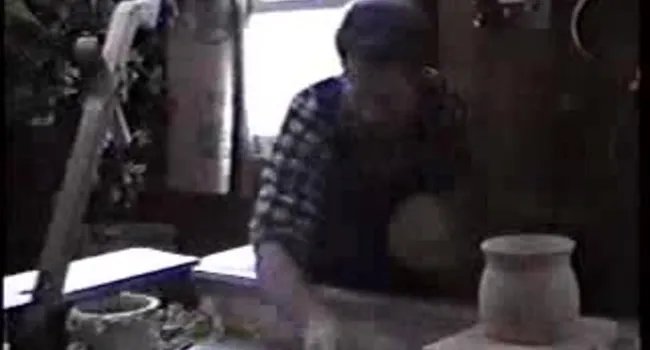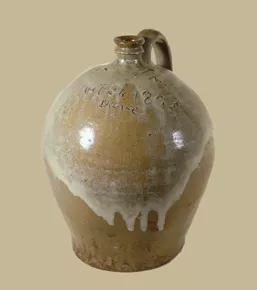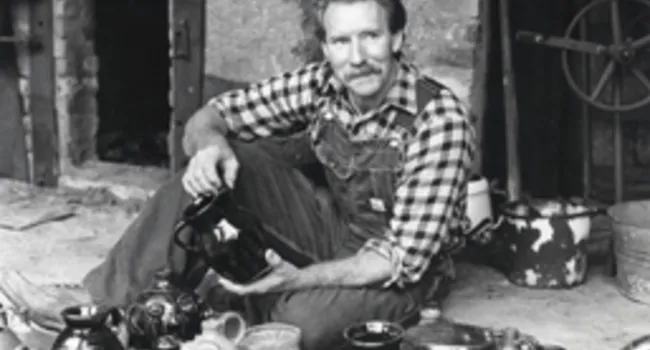
Video
This is an excerpt from the program "Folkways: Face Jugs and Folk Pots" narrated by David Holt. Learn more about Burlon Craig and the firing of his kiln from this is an excerpt from the program...
South Carolina, with its rich clay deposits, is the home to two different, but very important ceramic traditions - Catawba earthenware and alkaline-glazed stoneware. Before European contact in the 16th century, the Catawba Nation controlled much of what is now South Carolina and most of the North Carolina Piedmont. This tradition has continued through elder potters sharing their knowledge and skills with younger generations. While their techniques remain ancient, they have adapted their forms to changing markets. Kinship and community were also important in the development and diffusion of the alkaline-glazed stoneware tradition during the nineteenth century. Using European and African forms and labor the Edgefield, South Carolina, potteries produced containers used primarily for food preservation and preparation. As some potters migrated west and to other areas in the southeast, they spread the alkaline-glazed tradition into Georgia, North Carolina, Alabama and Mississippi.
Content is provided by McKissick Museum, University of South Carolina.
For further information about any of the artists featured on Digital Traditions, send your questions and comments to hallagan@mailbox.sc.edu.

Video
This is an excerpt from the program "Folkways: Face Jugs and Folk Pots" narrated by David Holt. Learn more about Burlon Craig and the firing of his kiln from this is an excerpt from the program...
Video
Billy Henson's talks about his groundhog kiln, which was a wood-burning treadle or “kick” wheel.
Video
David Drake was an enslaved African American in Edgefield, South Carolina during the first three quarters of the nineteenth century. He’s known today for the magnificent quality of the pots he made...
Audio
"Annette Stevens talks about what her family turned." A fifth-generation potter, Otto Brown (1899-1980) was a true journeyman potter. The son of Georgia potter James Osborne Brown, Otto turned pots in...
Audio
William J. Gordy (d. 1993), Georgia Art Pottery, Cartersville, Bartow County. Interview recorded June 1981. Dorris Xerxes "D.X." Gordy (d. 1994), Primrose, Meriwether County. Interview recorded June...
Audio
Billy Henson and Cinda Baldwin discuss the need for stoneware. A native of Lyman in Spartanburg County, Henson came from a long line of traditional potters. Both his grandfather, Jesse Vardry Henson...
Audio
Elizabeth Ringus, Paw Print Pottery Barnwell, Barnwell County. Interview recorded June 2007. Liz Ringus has been turning pots for over 36 years. A native of Massachusetts, Ringus and her husband Paul...
Audio
Miller Pottery, Brent, Bibb County. Interview recorded June 1981. Since the retirement of his father, the family pottery has been managed by this fourth generation potter. This Alabama potting dynasty...
Audio
Eugene Pottery, Cowpens, Cherokee County. Interview recorded June 2007 as the Folklife Resource Center continues to document pottery traditions in South Carolina. Winton Eugene is a self-taught potter...